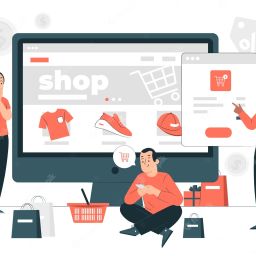 As an experienced entrepreneur, GQ Fu has founded and co-founded five companies. He is the CEO of LTVplus, a business that offers customer service outsourcing for ecommerce brands to increase their lifetime customer value. Most recently, GQ started Recover Payments and UberQA to solve other problems for digital brands. In addition to his startups, he hosts the How We Solve Podcast.
As an experienced entrepreneur, GQ Fu has founded and co-founded five companies. He is the CEO of LTVplus, a business that offers customer service outsourcing for ecommerce brands to increase their lifetime customer value. Most recently, GQ started Recover Payments and UberQA to solve other problems for digital brands. In addition to his startups, he hosts the How We Solve Podcast.
Here’s a glimpse of what you’ll learn:
- The source of involuntary churn among subscribers
- Anticipating subscriber needs through emails
- Are abandoned carts a part of involuntary churn?
- How to use SMS to personalize the customer’s experience
In this episode of the Ecommerce Wizards Podcast
Involuntary churn is a subtle but damaging trend for any subscription-based service. Ecommerce brands can often lose shocking sums of revenue based solely on negligence. While the issue can be devastating to a company’s bottom line, the solutions are often simple and easy to implement. All it takes is knowing the right steps to keep more current subscribers.
Guillaume Le Tual invites GQ Fu back on the Ecommerce Wizards Podcast to break down involuntary churn and how to minimize it. They discuss the source of the problem, the best strategies to combat churn, and how to solve the growing issue of abandoned carts. They also touch on how to anticipate subscriber needs to create a better user experience.
Resources Mentioned in this episode
Sponsor for this episode...
This episode is brought to you by MageMontreal.
MageMontreal is a Magento-certified ecommerce agency based in Montreal, Canada. MageMontreal specializes in and works exclusively with the Adobe Magento ecommerce platform, and is among only a handful of certified Adobe Magento companies in Canada.
Why Magento? Mage Montreal wholeheartedly believes that Magento is the best open source ecommerce platform on the market–whether you are looking to tweak your current website or build an entirely new website from scratch.
MageMontreal offers a wide range of services, including Magento website design and development, Magento maintenance and support, integration of Magento with third-party software, and so much more! They have been creating and maintaining top-notch ecommerce stores for over a decade — so you know you can trust their robust expertise, involved support, and efficient methodology.
So, if your business wants to create a powerful ecommerce store that will boost sales, move dormant inventory to free up cash reserves, or automate business processes to gain efficiency and reduce human processing errors, MageMontreal is here to help!
What are you waiting for? Contact MageMontreal today! Visit magemontreal.com or call 450.628.0690 to chat with the MageMontreal team about creating your dream ecommerce store and transforming your business.
Interested in our content?
Subscribe to our newsletter to get notified when we release a new podcast episode or new blog post.
Episode Transcript
Guillaume: Hello everyone. Guillaume Le Tual here, host of the Ecommerce Wizards Podcast where I feature leaders in e-commerce and business. Today’s guest is GQ Fu, who is back for the second episode with us today. He’s a co-founder of two companies, LTVplus and Recover Payments.com. Today we’ll be talking about reducing involuntary churn of e-commerce subscriptions or subscribers.
This episode is brought to you by MageMontreal, if a business wants a powerful e-commerce online store that will increase their sales or to move piled up inventory to free up cash reserves or to automate business processes to reduce human processing errors, our company MageMontreal can do that. We’ve been helping e-commerce stores for over a decade. Here’s the catch. We’re specialized and only work on the Adobe Magento e-commerce platform, also known as Adobe commerce. We’re among only a handful of certified companies in Canada, we do everything Magento-related. If you know someone who needs design, support, training, maintenance, or a new e-commerce website, email our team at [email protected], or go to magemontreal.com.
Can you tell us a little bit about those two companies GQ?
GQ: Sure. LTVplus is a customer service outsourcing company. We create a dedicated team of customer service agents who are highly trained and are selected based on your brand’s profile. So if you have your fitness brand, the agents are generally selected because they also love fitness and they have a good background of customer service. Recover Payments is essentially a full payment recovery service and a platform where we have a platform that extracts the full payments in your system from stripe, for example, when we are recharging in this case, and we run payment recovery campaigns with human experts.
Guillaume: Okay, perfect. So now for our main topic, reducing involuntary churn of subscriptions, especially for e-commerce is extremely important. It’s a metric that will be used by investors or by any acquirer if you sell your company. Of course, it’s part of the growth and anytime you lose customers on a subscription you’re not growing. It’s obvious but it’s worth mentioning because it has a huge impact on a company’s valuation. So how do you go about reducing churn?
GQ: Sure. That’s a really big topic if I have to talk about churn overall because that definitely covers a lot of different aspects. But we’ll dive into a very specific topic of churn and that is involuntary churn. When we talk about involuntary churn, we’re talking about customers who have credit cards that have expired, or their cards are maxed out, or their cards are no longer in use, or whatever reasons that doesn’t help them process their subscription. Despite follow up sometimes from the merchants, they don’t get those notices and they don’t rectify the issue and so they don’t get their subscription box, or whatever that was supposed to come through. So talking about that aspect of involuntary churn, statistically, we have seen that at least 10% of your revenue typically comes from involuntary churn. So that is a pretty big concern. This is something that businesses can consider recovering or basically working on because that’s like a low hanging fruit for you.
So when we talk about involuntary churn, what are some of the steps that you can consider doing? First of all, do you already have dunning software in place? When we talk about dunning, we’re talking about a software that basically sends out emails, possibly SMSs that will help follow up with the customer to help ensure that they are able to pay for the next subscription not because they want to cancel but they just kind of forgot about it? So you tell them, your card was maxed out and so we couldn’t process this payment for your subscription. So first having that dunning software in place. Obviously if you’re using recharge there’s a dunning feature already built into it, you could always check it out and see how much more you can customize it to ensure that you’re already following up with that. But that’s only one channel that you’re doing. The second aspect is that what other tools can you use to complement that? So once you’ve worked out the automation piece, that you’re actually contacting and setting up campaigns that spread out maybe over 15 to 30 days depending on what your cycle is like. That’s only the first part of the battle, because now you have technology basically reminding your customers their issues, like as to why they couldn’t be billed for the subscription, and they will naturally remember and follow up and take care of what needs to be done to continue with the subscription.
Guillaume: What do you think about sending some sort of a reminder, like, your card will be charged in X amount of days as a heads up and it will show on your statement as whatever, so you don’t say what the hell is that and call MasterCard or Visa to charge back?
GQ: Yeah, exactly. That’s actually a really good point. So anticipating and even contacting customers before the actual billing date is a very good idea. But you’d be surprised that not every merchant does that. They’re just like, “Okay, let’s try billing”, and then “Oh, it didn’t work”. So they might just send one or two emails and call it a day, but they’re also not taking into consideration that your customers are receiving a ton of emails every day and they might just miss your email. Yours might just be filtered under the so called marketing or support at email like a general email [Inaudible-05:55] or whatever and they don’t get those emails. They filter those out, maybe they have some kind of filter setup and they just keep passing all these emails and they don’t get them. So then the question comes, how do you tackle that? How do you tackle the issue when there’s too much noise, and customers miss those reminders? So that’s where you can start considering having your specialists or your own agents reach out to your customers.
Now, you can have one person on your team to do that, just spend some time going through all these different customers that have failed payments and reaching out to them personally. Because if you’re sending them a personalized email from say, GQ or Guillaume, you are making an asset when you’re sending an SMS to a person or even making a phone call. Not a lot of people do it these days and of course, maybe we don’t have [Inaudible-06:50] numbers as much but just making a phone call and using that opportunity, as some of you have listened to the previous episode, I have mentioned that making that connection with the customer is a really good chance for you to get that payment recovered as a result.
Guillaume: And do you put, let’s say, abandoned cart as part of that involuntary churn or do you treat that as a separate thing?
GQ: Well, I wouldn’t say involuntary churn in this case because with involuntary churn we’re talking about subscriptions, but abandoned carts is also something that you can take the same approach. There are obviously plenty of cart abandonment recovery tools on the market that will do that automatically. But on top of that this can go between two things, one, it could be a recovery for a possible subscription, two, it could be a possible recovery for a one time purchase. Now, weighing the volume and of course the order value, does it make sense to also perhaps have your human agent contact them?
Guillaume: Rippleman.
GQ: Give me your money, buy my stuff. But honestly, does it make sense for your agent to contact them and just let them know, we have your cart, is there anything that we can do to help them with their purchase? And perhaps they’ll be surprised but the question could have just been like, “Well, yeah, what’s your shipping time?” And they didn’t even bother to check the site. You get these questions, and you just wonder how that happens but maybe it’s good feedback that needs to be placed front and center. I think that the same strategies will work but the only difference would be the kind of tools that you use for cart abandonment recovery, that’s one. Some tools do both, you can take a look at that. And then of course, consider maybe having someone from your team reach out if it makes sense in terms of the costs because that’s such an order value as well.
Guillaume: Okay. In the topic of involuntary churn or the topic of reducing churn in general, do you see any other angle that they need to think about and address?
GQ: I think it’s also making it easy for people to update the subscriptions for example, or maybe even possibly changing your orders and what do I mean by that? For example, let’s say you have your agent or that person you’re on a phone call with, or even an SMS, let’s just talk about an SMS. We’re talking about someone who’s kind of intentional, who might not want to continue but because they just didn’t want to bother going to the website or they’re too busy. Because they’re thinking maybe “I’ve been ordering a packet of protein bars every two months but now I want to change the flavor but I’m not really liking the flavors there.” If they wanted to swap it out, having your agent be able to do that over SMS, that changes a lot of things. That basically allows you to extend the lifetime value because you’ve addressed the customer’s need quickly over SMS, it’s kind of like customer service.
The second part of that is also that you know the history of your customers purchases, you know what kind of products they’re usually going for, what kind of flavors they like and maybe you’ve developed a new taste, and this is probably a good time to say, “Hey, I’ll change it to this for you but can I also share with you this new product and it doesn’t cost you anything, just try it out and let us know what you think.” That gives you the opportunity to already share this new prototype or product with your customers. That also, in the long term helps you reduce involuntary churn because you’re basically providing extra value, you’re also thinking and personalizing the experience for your customer, because then they’re like “They actually take into consideration what I like.” So that’s probably another example that we can go with.
Guillaume: I like your example of the expiring credit card date, because that’s a risk of churn right there. Because you’re asking the customer to make, again, the decision of continuing to purchase your product. Back to basic fundamentals of business, the perceived value is very high. It’s just nice to make sure as much as possible that there’s connection with the brand. If you can build that engagement level so that they can be seen as valuable. They will make the effort of going and updating their credit card and their profile. Hopefully it’s user friendly to do that process. Otherwise it would be a passive way of unsubscribing, you just don’t give the new credit card number and you just don’t bother.
GQ: That’s true. I think every opportunity that you get to engage with the customer at any given point is always highly valuable.
Guillaume: Is there anything else to cover specifically for involuntary churn?
GQ: I mentioned setting up those tools first, start and test and see what sticks, what type of dunning campaigns can you run from an automation standpoint and then following that up with agents that actually specialize in that and I think it’s a really good start to definitely look at.
Guillaume: Alright GQ, if people want to get in touch with you, what’s the best way of doing that?
GQ: Sure. You can find me at GQ Recover Payments on LinkedIn. I’m pretty much the only one there, as far as I can tell for now. Feel free to reach out and we can definitely chat more.
Guillaume: All right. Thanks for being here today, GQ.
GQ: All right. Thanks a lot Guillaume. You take care.











